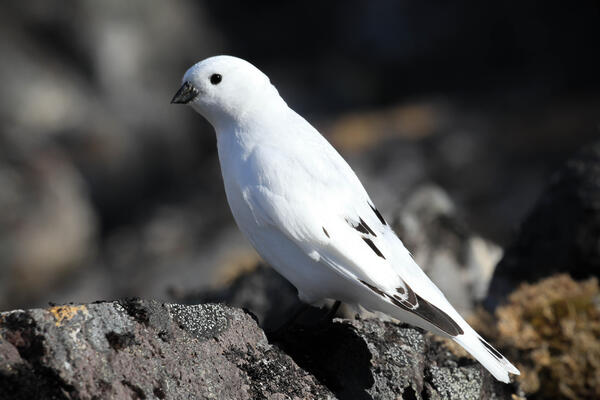Video of Rare Birds Breeding on St. Matthew Island, Alaska
A video produced by Andy Johnson with the Cornell Lab of Ornithology highlights collaborative research conducted on St. Matthew Island within the Alaska Maritime National Wildlife Refuge. The video features research by the USGS Alaska Science Center and the U.S. Fish and Wildlife Service conducted in 2018 and 2019. The research team focused on surveying McKay's Bunting and Pribilof Rock Sandpiper.
St. Matthew and Hall islands provide breeding habitats for approximately 140 species of birds. In 2018, a research team focused on studying the populations and nesting habits of two particularly rare species: the McKay's Bunting (Plectrophenax hyperboreus) and the Pribilof Rock Sandpiper (Calidris ptilocnemis ptilocnemis). It had been 15 years since researchers last visited these remote islands to study these birds. Finding their nests can be challenging; the Pribilof Rock Sandpiper's nests are expertly camouflaged and blend into the tundra to protect their young from predators. Meanwhile, the McKay’s Buntings, previously referred to as "snowflakes" due to their pure white feathers and distinctive flight displays, nest in rock crevices along talus slopes.
Researchers from the USGS Alaska Science Center (USGS ASC) are collaborating with the U.S. Fish and Wildlife Service’s (USFWS) Alaska Maritime National Wildlife Refuge and Division of Migratory Bird Management to reassess the population status of these two species, which are endemic to Alaska. Both the McKay’s Bunting and the Pribilof Rock Sandpiper breed solely on isolated islands in the Bering Sea and winter along the coasts of the Bering Sea and Cook Inlet, respectively. Previous studies conducted in the early 2000s estimated the populations at 31,200 McKay's Buntings and 19,800 Pribilof Rock Sandpipers, highlighting their status as some of the continent’s rarest and most range-restricted birds. This makes them particularly vulnerable to extinction and a conservation priority on both regional and continental scales.
From 2018 to 2024, scientists from USGS ASC and USFWS replicated surveys of these rare birds that were originally conducted from 2001 to 2003. Their goals were to monitor changes in population size and reproductive success, identify important breeding habitats, and assess the risks of local extinction.




